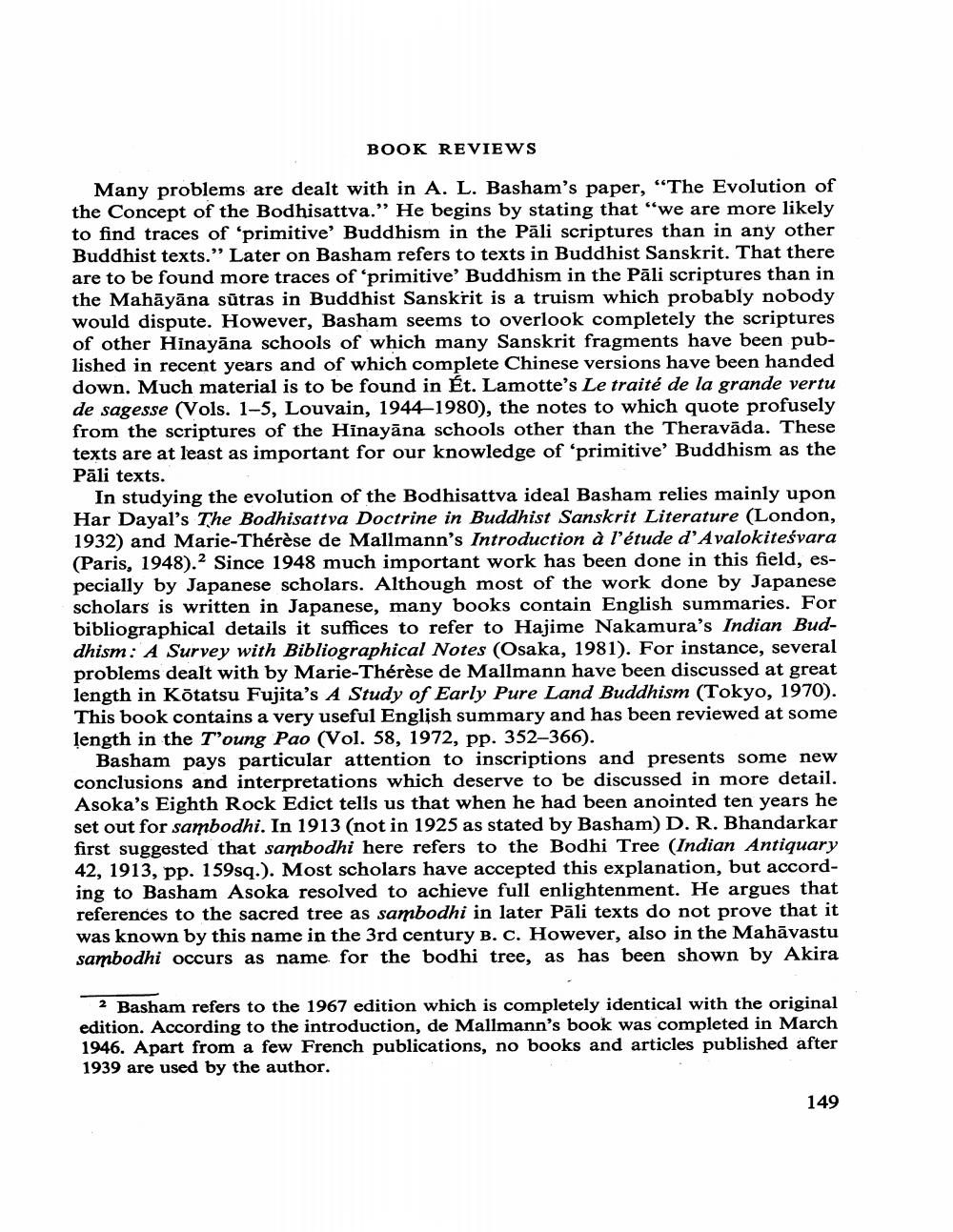________________
BOOK REVIEWS
Many problems are dealt with in A. L. Basham's paper, "The Evolution of the Concept of the Bodhisattva." He begins by stating that "we are more likely to find traces of 'primitive' Buddhism in the Pāli scriptures than in any other Buddhist texts." Later on Basham refers to texts in Buddhist Sanskrit. That there are to be found more traces of 'primitive' Buddhism in the Pāli scriptures than in the Mahāyāna sûtras in Buddhist Sanskrit is a truism which probably nobody would dispute. However, Basham seems to overlook completely the scriptures of other Hinayana schools of which many Sanskrit fragments have been published in recent years and of which complete Chinese versions have been handed down. Much material is to be found in Ét. Lamotte's Le traité de la grande vertu de sagesse (Vols. 1-5, Louvain, 1944-1980), the notes to which quote profusely from the scriptures of the Hinayana schools other than the Theravada. These texts are at least as important for our knowledge of 'primitive' Buddhism as the Pāli texts.
In studying the evolution of the Bodhisattva ideal Basham relies mainly upon Har Dayal's The Bodhisattva Doctrine in Buddhist Sanskrit Literature (London, 1932) and Marie-Thérèse de Mallmann's Introduction à l'étude d'Avalokitesvara (Paris, 1948). Since 1948 much important work has been done in this field, especially by Japanese scholars. Although most of the work done by Japanese scholars is written in Japanese, many books contain English summaries. For bibliographical details it suffices to refer to Hajime Nakamura's Indian Buddhism: A Survey with Bibliographical Notes (Osaka, 1981). For instance, several problems dealt with by Marie-Thérèse de Mallmann have been discussed at great length in Kötatsu Fujita's A Study of Early Pure Land Buddhism (Tokyo, 1970). This book contains a very useful English summary and has been reviewed at some length in the T'oung Pao (Vol. 58, 1972, pp. 352-366).
Basham pays particular attention to inscriptions and presents some new conclusions and interpretations which deserve to be discussed in more detail. Asoka's Eighth Rock Edict tells us that when he had been anointed ten years he set out for sambodhi. In 1913 (not in 1925 as stated by Basham) D. R. Bhandarkar first suggested that sambodhi here refers to the Bodhi Tree (Indian Antiquary 42, 1913, pp. 159sq.). Most scholars have accepted this explanation, but according to Basham Asoka resolved to achieve full enlightenment. He argues that references to the sacred tree as sambodhi in later Pāli texts do not prove that it was known by this name in the 3rd century B. C. However, also in the Mahāvastu sambodhi occurs as name for the bodhi tree, as has been shown by Akira
2 Basham refers to the 1967 edition which is completely identical with the original edition. According to the introduction, de Mallmann's book was completed in March 1946. Apart from a few French publications, no books and articles published after 1939 are used by the author.
149




